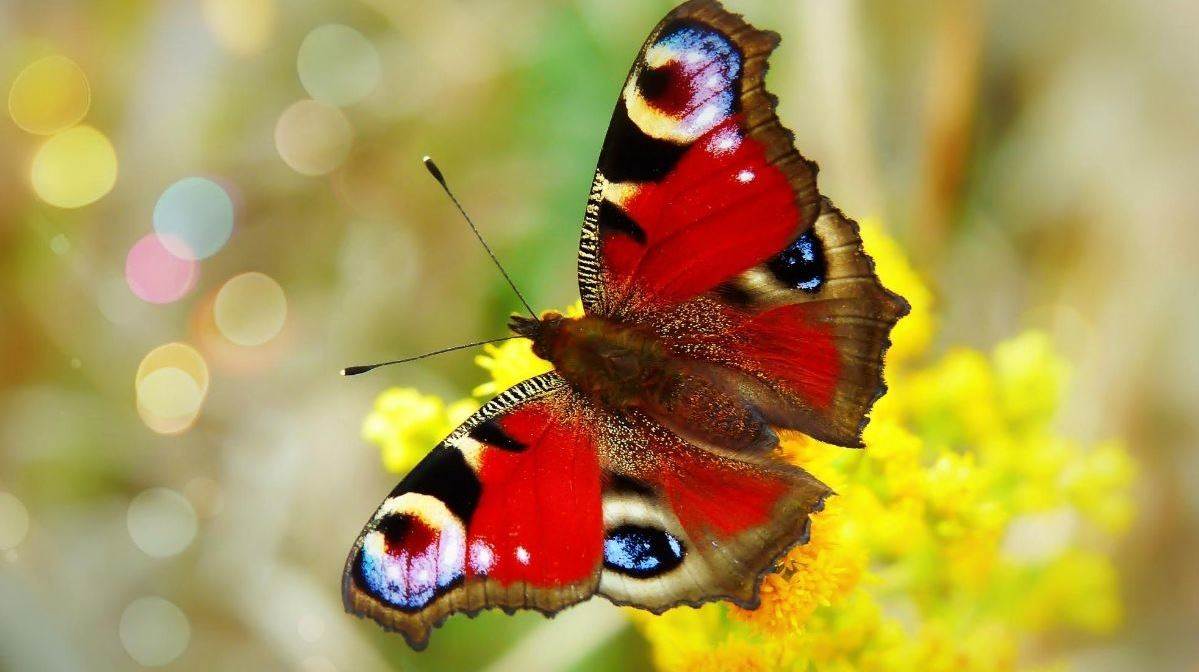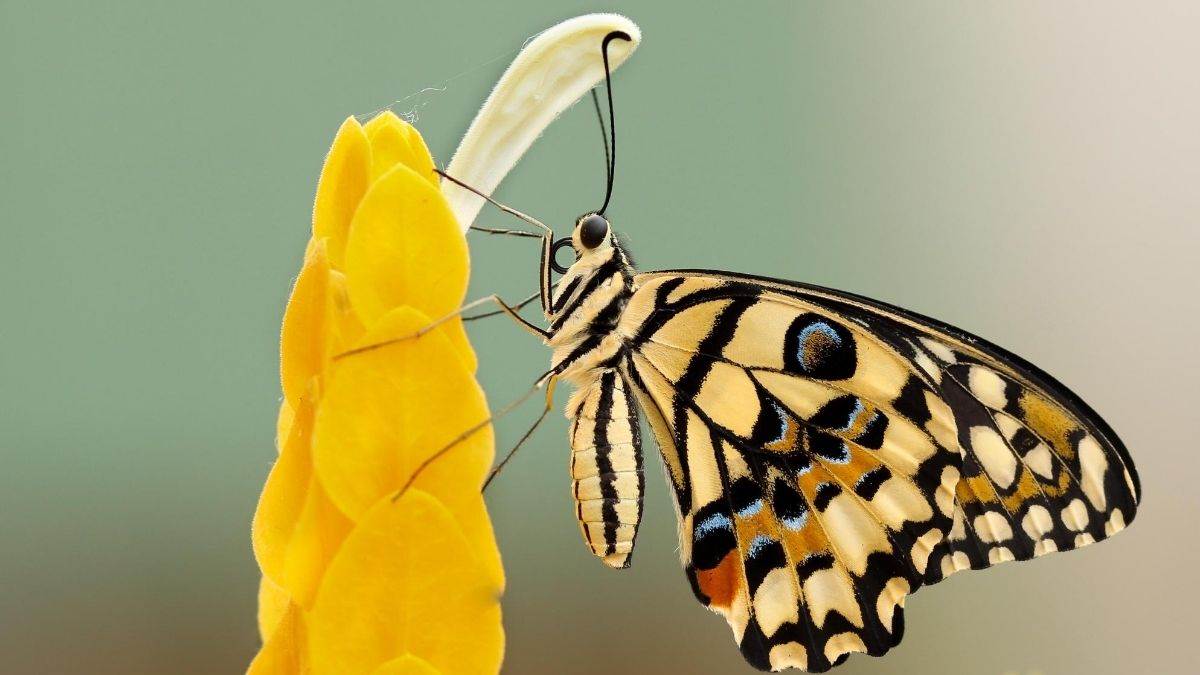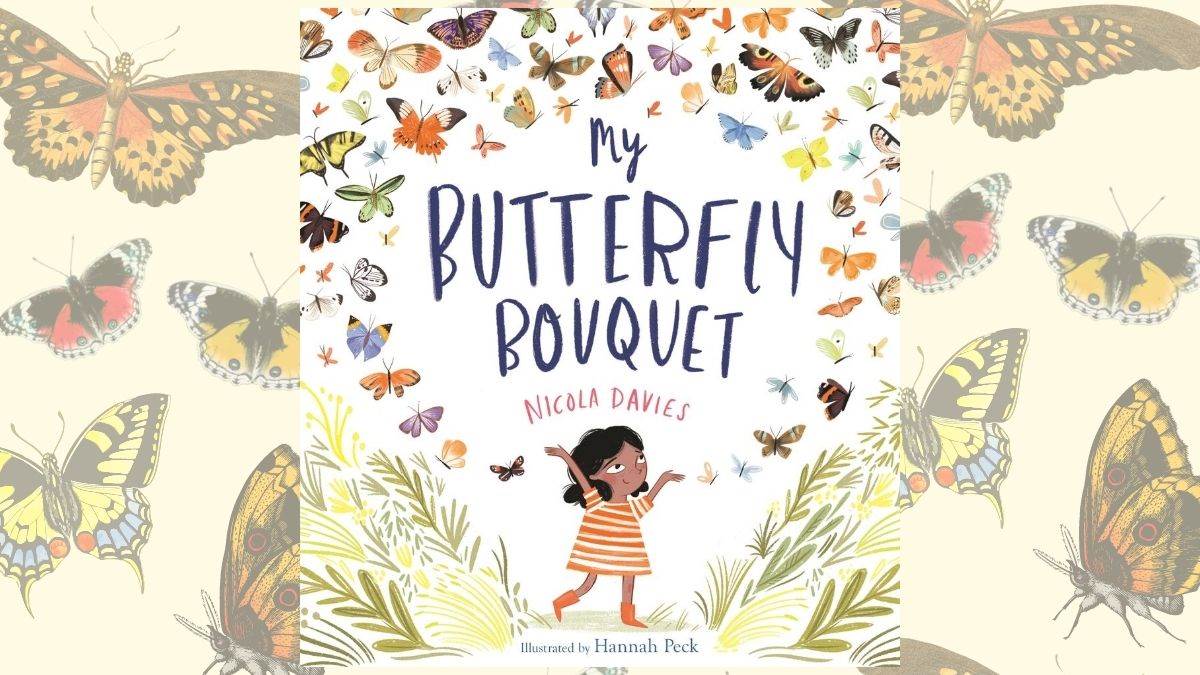How to Befriend a Butterfly
Published on: 06 August 2020
Invite the wild into your garden or windowsill and create your own butterfly bouquet! Writer Nicola Davies explains why these beautiful creatures are so inspiring and how we can help them.
 Photo by Krzysztof Niewolny
Photo by Krzysztof Niewolny
Going through difficult times, such as being ill in hospital like the little girl in My Butterfly Bouquet or being shut inside for weeks in lockdown, makes people think about what really matters to them. It seems that for almost everyone, nature is really important. Spending time in nature can soothe us, heal us, calm us down. You don’t need to go on safari to see lions or elephants, you don’t need to dive on a coral reef or swim with dolphins, you can just sit in your garden or in a park and watch a butterfly doodling around over the flowers. I don’t think anyone could fail to be cheered up by seeing a butterfly - everything about them is beautiful: the colours of their wings; the way they float and flutter and, when you get really close, their big glamorous almond-shaped eyes, delicate antenna and amazing roll-up tongues.
Beautiful butterfly buddlejas
When I was a little girl it was really easy to see lots of butterflies. At one time we lived near a big road just to the north of London, not exactly countryside! But in our garden we had a big butterfly bush (a buddleja) and when it bloomed, with lots of cone-shaped bunches of little purple flowers, it was covered in butterflies, feeding on nectar. Peacocks with their bright eye patterns, small tortoiseshells, commas, painted ladies, large whites and my favourites, the red admirals with their chocolate brown wings splashed with bright scarlet and ice white. Butterfly bushes grew beside the the railways tracks too and in summer you could see little clouds of butterflies rise up as the trains passed by.
Buddleja bushes still bloom along the railway sidings but they are no longer covered in butterflies. Butterfly numbers in the UK have dropped by more than half in the last 40 years. Along with bees and moths, butterflies have suffered from the loss of wild places, the growth of roads and towns and the way human beings have used chemicals to kill insects and plants.
The bad news is that they we really need those insects - not just for the buzz and beauty they bring into our lives, but because they pollinate many of our crops and help to feed us. Many wild plants rely on insect pollinators, like butterflies, too. Without them, we will lose many kinds of wild plants. That’s important because wild places like woodlands, heath and marsh land are communities, made of a great variety of different plants. Take away that variety and those habitats are no longer healthy communities, so they can’t provide us with clean air and clean water they way they do now.
 Photo by Boris Smrokovic
Photo by Boris Smrokovic
How we can help
But the good news is that butterflies can bounce back and you can help them do it. The wonderful charity Butterfly Conservation (founded by Dr Martin Warren with whom I shared an office when we were PhD students 40 years ago) has all the information you need to show you just what to do to help butterflies.
You can give butterflies a helping hand by providing a useful feeding station even if all you have is a square meter of patio or balcony. Just plant flowers that butterflies like and they’ll fly in to feed. You’ll have your very own Butterfly Bouquet!
If you have a bit more room, you could plant things that will give them a place to lay their eggs, and provide food for their caterpillars. Although many kinds of butterflies will feed on the same kind of flowers, caterpillars can be much more picky, and some will only only feeding one or two kinds of plant. The green hairstreaks - like bright green flying leaves - that I see here on the clifftops in Pembrokeshire have caterpillars whose favourite food is little yellow flowered plant called birds foot trefoil. Luckily the caterpillars of many common garden butterflies like red admirals, peacocks and commas love nettles so if you can make a home for them by leaving a little patch of nettles undisturbed.
Then, you might then be lucky enough to see one of the most magical things in the whole of nature - a butterfly emerging from its chrysalis. Inside the chrysalis the caterpillar transform itself from a little tube shaped eating machine, into a butterfly with six jointed legs, two pairs of wings, antennae and big eyes. When it crawls out of the chrysalis at looks a bit pathetic and bedraggled, but watch and wait and you’ll see its wings stretch out, dry in the sun and then a brand new, perfect butterfly will flutter off.
Spreading butterfly love
We have 59 different species of butterfly in the UK. But in tropical countries there are far more; in the forests and mountains of Peru for instance there are more than four thousand different species and scientists haven’t even found and named all of them yet. Just like our butterflies they are important pollinators, each with a part to play in keeping their wild communities healthy and full of life. And just like our butterflies they are threatened by the destruction of their habitats, by the use of chemicals and by climate change. You can help these butterflies too, by learning more about them, by telling all your friends how brilliant butterflies are and perhaps even raising money for conservation charities, like the World Land Trust who safeguard habitats where butterflies and thousands of other animals and plants live, around the world.
Spread a bit of butterfly love and who knows there could be bouquets of butterflies everywhere again!
Nicola Davies' book, My Butterfly Bouquet, is one of the Books We Love for August and is reviewed here.
 The cover of My Butterfly Bouquet by Nicola Davies, illustrated by Hannah Peck
The cover of My Butterfly Bouquet by Nicola Davies, illustrated by Hannah Peck
Topics: Animals, Environment, Science, Nature, Features





